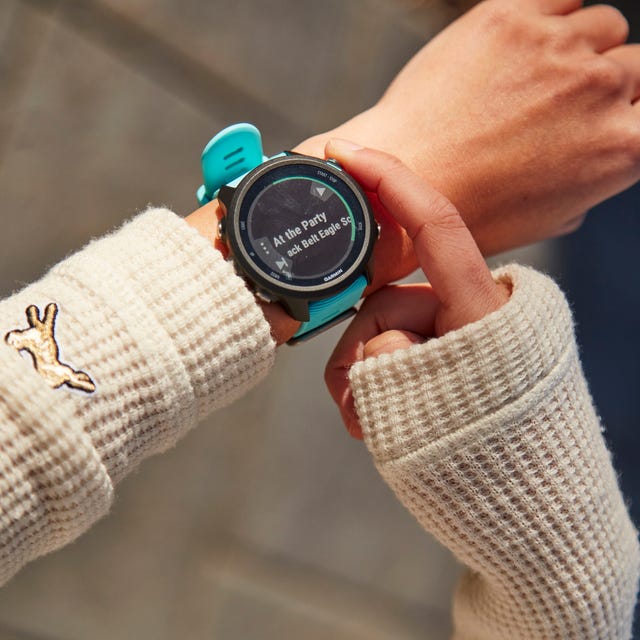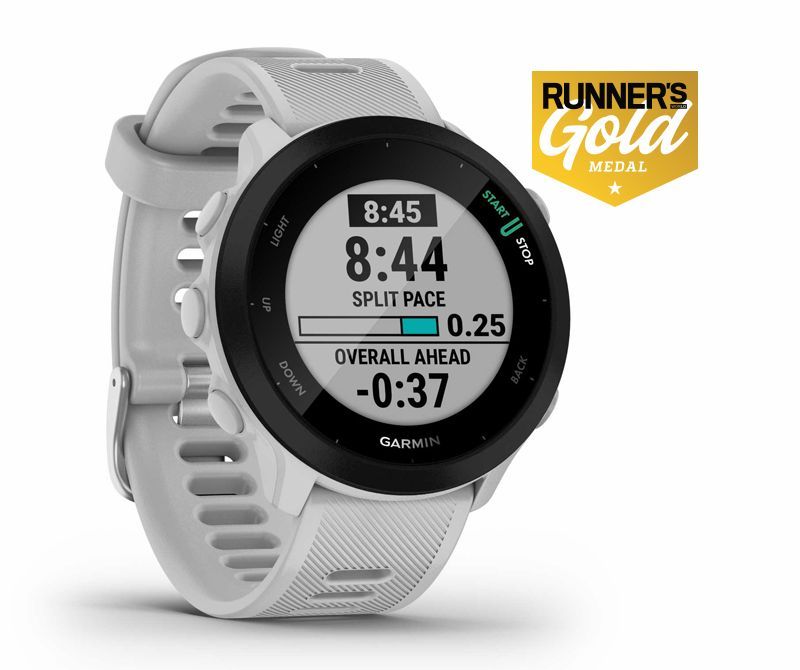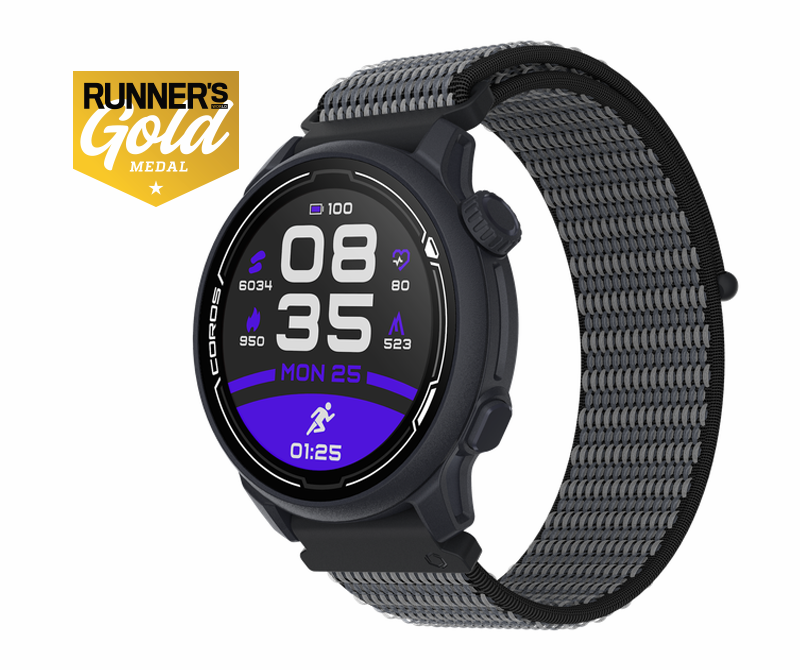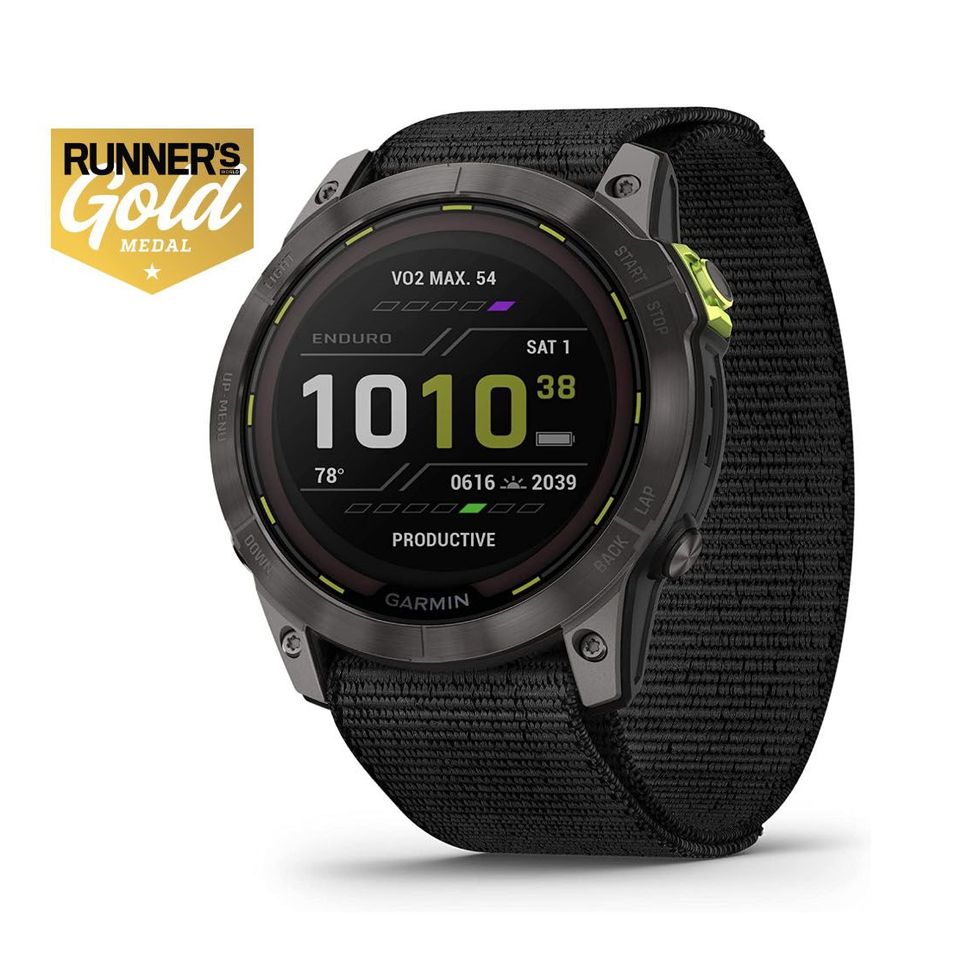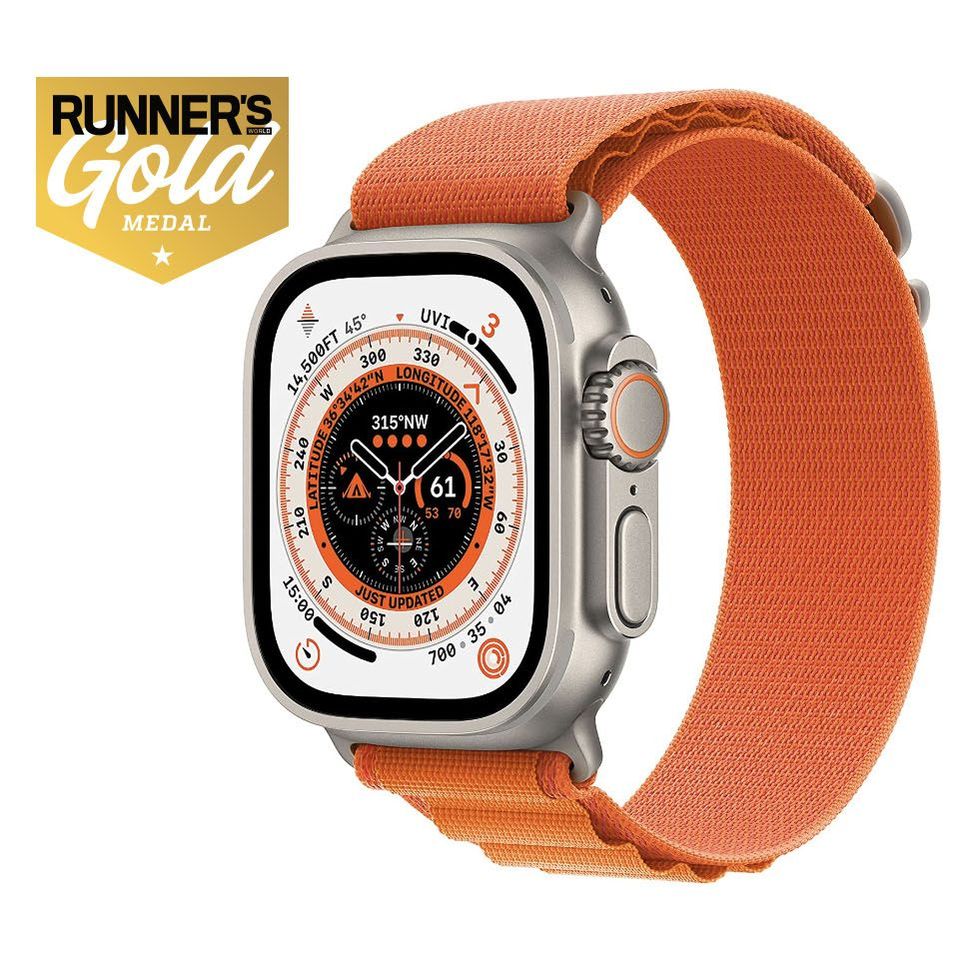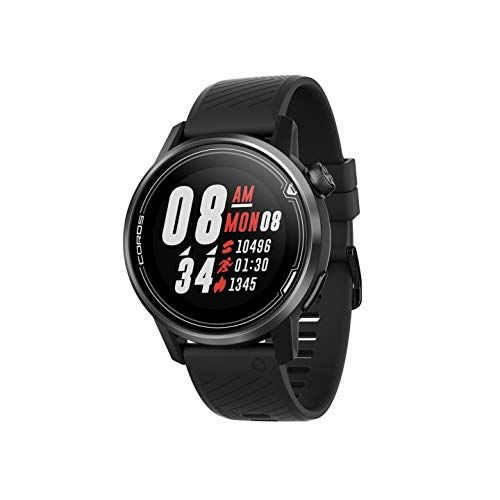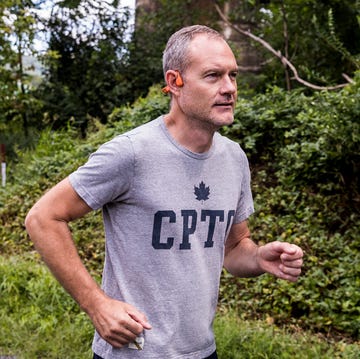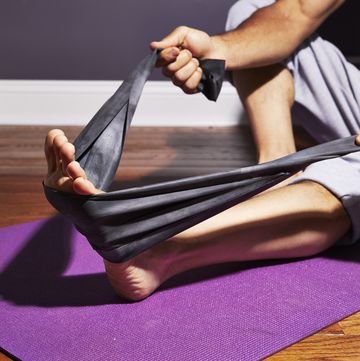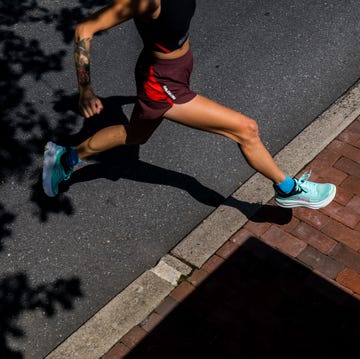Many of us feel naked when we’re running watch-free. As runners, we’re data-driven and goal-oriented, and we like keeping track of our progress. The right smartwatch puts our statistician mindset at ease, especially when numbers like pace, distance, heart rate, and cadence are just an upload away.
We have roundups on the best advanced GPS watches and the best running watches under $200, as well as the best Garmin watches.
We’ve chosen five watches from these lists, and from our 2022 Gear of the Year, that are lifestyle-specific, from ultramarathoner to triathlete to basic road runner. The watches below are divided by best value (under $200) and top dollar, so you can find the one that fits your way of life without burning a hole in your wallet.
Garmin Forerunner 55
You don’t have to be a beginning runner to want a Forerunner 55—less metrics-obsessed runners who can survive without advanced analytics like virtual partner, live segments, stride length, and sensors like a pulse oximeter and barometer will be happy with the 55. It also doesn't have multi-sport tracking capabilities, and it can't hold music. That said, this watch has nearly all of the features most of really need from a GPS tracker, including heart rate monitoring, smartwatch functionality, and advanced pacing and workout metrics. Sacrificing some of the more advanced features will also save you some serious money—the 55 costs less than half of the price of a more sophisticated Forerunner. It’s also a little smaller than other models, so it’s great for younger runners, as well—but it still has a stellar battery life of up to two weeks in smartwatch mode or 20 hours in GPS mode.
Coros Pace 2
We’ve been big fans of Coros for its affordable, long-lasting alternatives to the major players in the GPS watch game. Its new Pace 2 is refined to focus only on being the lightest, fastest run-tracking experience for road runners.
The Pace 2 isn’t bogged down by any extra features you’re unlikely to ever use. At just 29 grams, it’s the lightest GPS watch we’ve tested—the Apple Watch Series 7 weighs 32 grams, and the original Pace was 48 grams—but doesn’t skimp on battery. (In fact, it’ll go up to 30 hours between charges with GPS tracking on, long enough that you can leave the power cord at home when you go away for a weekend run vacation.) Some of that weight savings comes from a new lightweight nylon strap that’s comfortably snug and more easily adjustable than silicone options.
Garmin Enduro 2
The newest version of the ultra-endurance Enduro nearly doubles the battery life of the first version during activity, and lasts for 120 hours in normal GPS mode with optical heart rate active. Over a month and a half of using GPS tracking on regular training runs and bike-commuting to Runner’s World HQ, as well as a 15-hour run in the Alps using built-in navigation for confidence through a few off-trail sections, resident ultrarunner and video producer Pat Heine-Holmberg only had to recharge the watch once. It’s easy to fine-tune battery performance if you need even longer run time, and the menu shows how many hours you’ll gain or lose by turning different sensors off and on. Daily-use features, like Garmin Pay, music apps, and a touchscreen, really make it a tool of convenience on the go. For trail adventures and ultra racing, the Enduro 2 now has access to more satellite systems, topo maps for navigation, and even a decent flashlight that is bright enough to use as an emergency backup if your headlamp fails on the trail.
Apple Watch Ultra
“Is the Ultra a Garmin killer?” Well, probably not, but it represents the tech giant’s first formidable sports watch that can hang with premium adventure trackers from Garmin, Coros, and Polar. The 49mm titanium case is larger than previous Apple Watches and houses a bigger battery that can last up to 36 hours in mixed use. Even when used for long endurance events, it’ll have enough juice to get you through a marathon or triathlon with GPS, heart rate, and wireless streaming music, which the earlier version of the Apple Watch could not do. Plus, it’s one of a few watches to hit the market this year with dual-frequency GPS, leveraging a second signal from satellites to greatly increase accuracy. A new “Action” button on the side can be customized to quickly launch apps or take splits. This isn’t entirely new—Garmin has long had “hot keys”—but it’s a convenient feature from a smartwatch that was primarily controlled through a touchscreen and makes it much easier to use when you’re running with gloves on.
Coros Apex
Packing precise GPS tracking and insane battery life into a compact package, the Coros Apex is a top-tier multisport watch for beginners and elites alike. The Apex keeps the countless metric combinations found in the Pace, the brand’s previous sports watch, while integrating some exciting new features that runners will embrace. Notably, battery life is up to 35 hours in regular GPS tracking mode, but can be extended to last up to 100 hours if you require. It also gives you a slew of metrics you can view over five screens during your workout, including a new metric called stamina—an estimate of how much energy you have left in your own tank.
Amanda Furrer, Editor, Running Reviews, studied journalism at NYU and writing at Emerson College. She has reviewed gear and covered other topics in the running space for almost 10 years. Since 2013, she has consecutively run the Boston Marathon. She also has a master’s degree in gastronomy from Boston University and was formerly a professional baker for two years before hanging up her apron.
Jeff is Runner-in-Chief for Runner’s World and the director of product testing. He has tested and reviewed running shoes, GPS watches, headphones, apparel, and more for nearly two decades. He regularly tests more than 100 pairs of shoes each year, and once had a 257-day streak running in different models. Jeff can usually be found on the roads, racing anything from the mile to a marathon, but he also enjoys racing up mountains and on snowshoes. When he’s not running, you’ll probably find him hanging from a ladder making repairs and renovations to his house (he’s also director of product testing for Popular Mechanics).

Morgan is a gear editor who has been with Runner’s World since 2017. She started as an intern ghostwriting The Warmup, a bygone version of the daily RW newsletter. Now, she tests and reviews anything you might find on runners’ feet-from crew socks and compression boots to carbon-plated super shoes.
A lifelong runner and shoe geek, Morgan has been chasing the perfect pair of kicks since she joined her grade school cross-country team. Since then, she ran as a Division I walk-on for the cross-country and track & field teams at the University of Delaware, where she studied English and Biology. She has one full marathon under her belt, and has raced more halfs and 5Ks than she can count.
